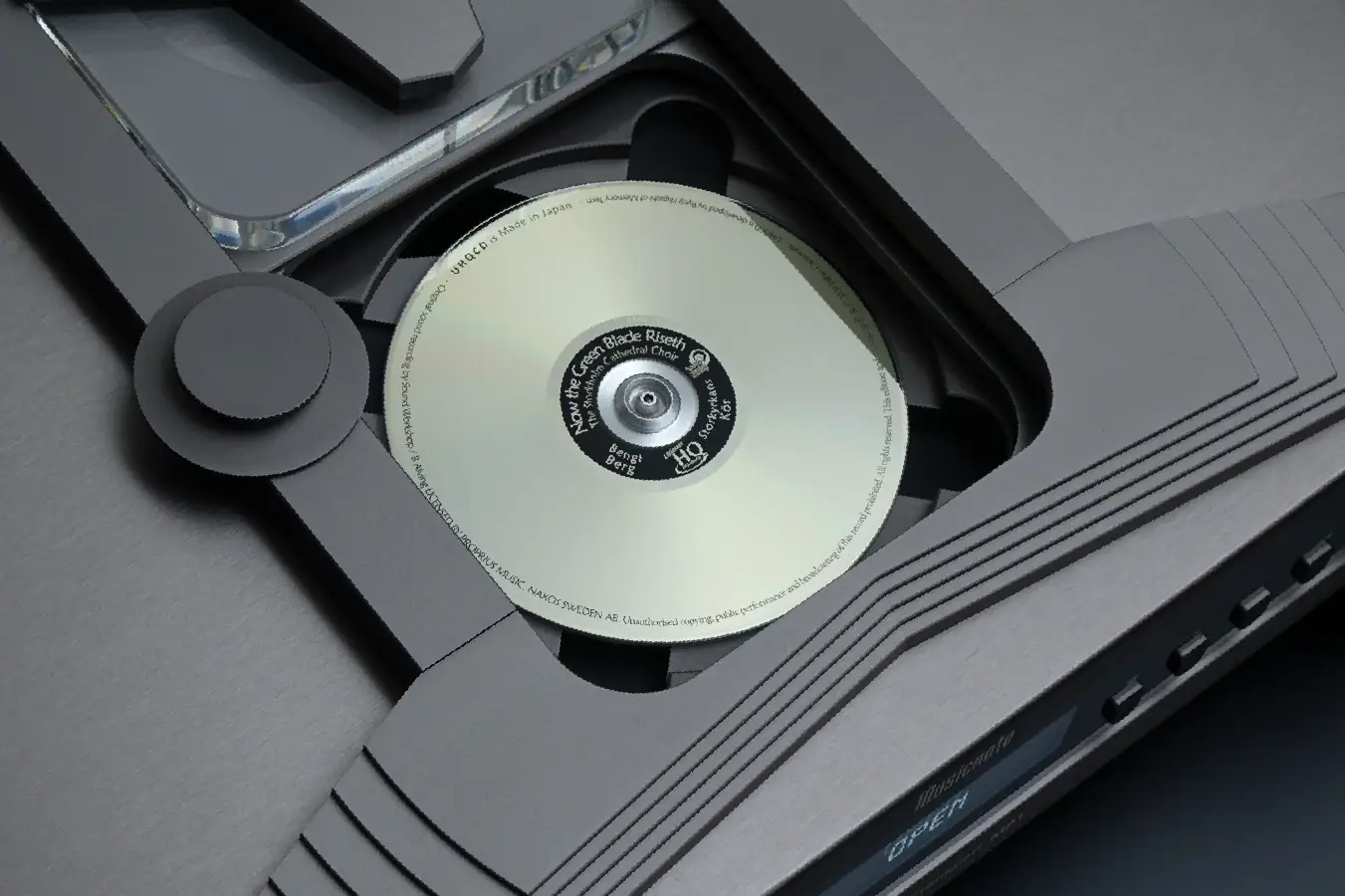Definitive edition of High-Quality Audio Compact Disc (CD) which is fabricated using totally new Disc Production method.


Ultimate High Quality CD (UHQCD)
More than 30 years have passed since the birth of the Audio CD in 1982. Here, we offer the definitive version of high-quality Audio CDs that greatly surpass all previous CDs.
Media discussion about the high-fidelity music boom of recent years has focused largely on high-definition audio distribution, Blu-ray audio technology, and devices that use flash memory to store huge volumes of high-quality audio files.
At the same time, commercial CD products continue to be sold in substantial quantities and CD players remain widely diffused. Utilizing a totally new manufacturing technology that leverages all the technological expertise the company has accumulated as an optical disc maker, Memory-Tech has developed the Ultimate High Quality CD (UHQCD). The new discs do not require any special CD player. Ultimate high-quality audio can now be enjoyed using any existing Audio CD player.
WHAT IS UHQCD?
Since the birth of HQCD, Memory Tech Corporation (MTC) in Japan continued to make trial-and-error efforts to reproduce audio at even higher quality. Engineers from MTC researched new materials and investigated ways to reproduce audio with the highest possible fidelity. After a variety of experiments, they decided on a completely new approach to the task–radically changing the CD manufacturing process itself. They exhaustively questioned the conventional wisdom about CD manufacturing, which had remained largely unchanged across the world for over 30 years. Through this effort, which might seem ill-advised, they finallyt arrived at the ultimate in quality – a level of quality that is certainly impossible to achieve with existing CD discs.
Features of UHQCD
- Discs conform to the CD specification and are playable on existing Audio CD players.
- Master audio is reproduced more faithfully compared to existing high-quality CDs, thanks to a newly developed disc manufacturing process. Newly developed disc manufacturing process masks the sound quality of UHQ CD closer to the master quality compared to existing high-quality CDs
- Offers easy enjoyment of high-quality audio at a quality that is very close to that of Crystal Disc.





Conventional high-quality Audio CDs
MTC developed their conventional high-quality Audio CD discs through an effort to improve audio quality by simply upgrading the materials used in ordinary CD discs to higher quality materials. For example, for the substrate we used a high-transparency and high-fluidity polycarbonate (a type of plastic) of the type used for LCD panels, while for the reflective layer, we replaced low-cost, common aluminum with a unique and expensive alloy of high-reflectivity. These improvements made it possible for mass-produced CD discs to reproduce audio with greater precision. In fact, HQCD discs were used to release a wide range of classical and jazz music titles. The approach of upgrading raw materials is limited, however. To achieve further improvements in audio reproduction, we had to totally rethink the disc manufacturing process itself.
Conventional high-quality Audio CDs
Conventional Audio CDs are produced using the technique of injection molding to form “pits” of data on polycarbonate material. Metal plate on which “pits” representing audio source data are formed is used as a die. This is called the “stamper.” Polycarbonate is melted at high temperature and poured into the die to duplicate the pit patterns on the stamper.
This method is efficient because it enables high-speed production, but it does not enable totally accurate or complete duplication of the pits on the stamper. As a melted plastic, polycarbonate is inevitably viscous, so it cannot penetrate completely into every land and groove of the tiny pits of the stamper. MTC tried to reproduce finely detailed patterns using the high-quality polycarbonate used in LCD panels, but complete replication proved to be difficult.
In the new method MTC developed, however, MTC used photo-polymer instead of polycarbonate to replicate the pits of the stamper. In their normal state, photo-polymers are liquids, but one of their characteristic properties is that they harden when exposed to light of certain wavelengths. Taking advantage of this property, MTC managed to achieve perfect replication of very finely detailed pits. Photopolymers in the liquid state are able to penetrate into the tiniest corners of pits on the stamper so that the pattern of the pits is reproduced to an extremely high level of accuracy. Like this, we successfully replicated and reproduced audio at a level that is impossible to achieve using conventional CD production technology.
Difference in manufacturing method


